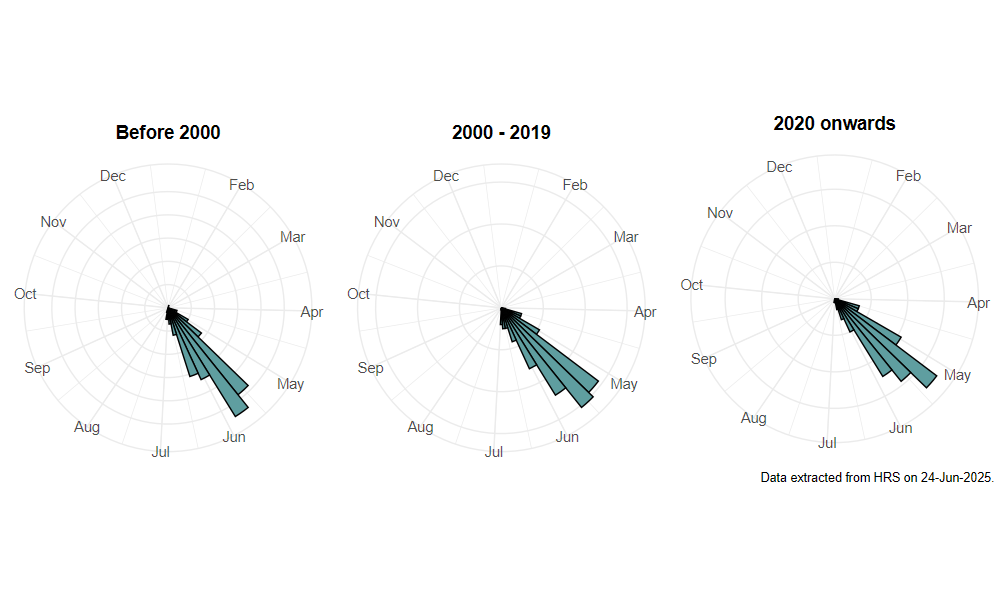Brachypalpus laphriformis (Fallén, 1816)
Identification
Identification difficulty = 2. ![]()
![]() according to Ball & Morris, 20241
according to Ball & Morris, 20241
Synonymy
Brachypalpus bimaculatus (Macquart, 1829) in Coe(1953)2 and Kloet & Hincks (1976)3.
Biology
The larva is found in rot-holes in deciduous trees such as Beech Fagus sylvatica, Ash Fraxinus excelsior and particularly, Oak Quercus. Males are usually found sunning themselves on trunks or flying around fallen trees in clearings. Females are more elusive, but can be found investigating trees suitable for breeding. In flight they closely resembles solitary bees of the genus Osmia and may therefore have been overlooked. Occasionally found at tree flowers such as Hawthorn Crataegus.
Flight period
The following plots show the number of unique records per week excluding those reported to be of immature stages.

Status
Was listed as 'Notable' by Falk, 19914 and Rare (RDB3) by Shirt, 19875, but dropped from these statuses by Ball & Morris, 20146. Therefore considered LOWER RISK.
Distribution
Most frequently encountered in well-wooded areas in southern Britain. It can occasionally occur in numbers in localities such as Windsor Great Park, but it is more frequently found as single individuals. The majority of records are from southern and western England as far north as the Cumbria where it seems to be well-established. The first Scottish record came from Perth in 2010(Wilkinson, 2010)7.

Trends
The following plots show the Frescalo TFactor vs year and a map of the rescaled frequency (all records) for the species.
-
Ball, S., & Morris, R. (2024). Hoverflies of Britain and Ireland. WILDGuides (3rd ed.). Oxford: Princeton University Press. ↩
-
Coe, R. (1953). Diptera: Syrphidae. Handbooks for the Identification of British Insects, 10(1), 1–98. ↩
-
Kloet, G., & Hinks, W. (1976). A check list of British insects. 2nd Ed. Part 5: Diptera and Siphonaptera. Handbooks for the Identification of British Insects, 11, 1–139. ↩
-
Falk, S. (1991). A review of the scarce and threatened flies of Great Britain. ( No. 39). Research and Survey in Nature Conservation (pp. 1–194). Peterborough: NCC. ↩
-
Shirt, D. (Ed.). (1987). Red Data Books: 2. Insects. Peterborough: NCC. ↩
-
Ball, S., & Morris, R. (2014). A review of the scarce and threatened flies of Great Britain. Part 6: Syrphidae. ( No. 9). Species status (pp. 1–130). Peterborough: JNCC. ↩
-
Wilkinson, G. (2010). Cheilosia psilophthalma Becker and Brachypalpus laphriformis (Fallén) (Diptera, Syrphidae) new to Scotland. Dipterists Digest (Second Series), 17, 165–167. ↩